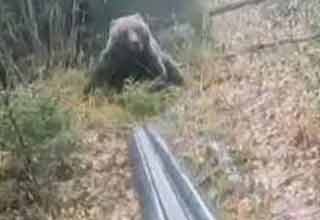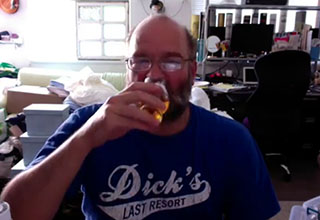
Charles Darwin changed the face of the world. Along the way, he made many think he was an agent of the devil himself.
But between his research and his reputation, what was the REAL Charles Darwin like? Find out yourself with these crazy facts!

Charles Darwin's personal pet tortoise (Harriet) didn't die until recently at an estimated age of 175 years.

Darwin, Australia was named after Charles Darwin but before he published his theory of evolution. Captain Wickham sailed with Darwin during HMS Beagle's first voyage, then he named the area after his old crewmate during the second voyage when he surveyed Northern Australia.

Charles Darwin's Tree of Life sketch was anonymously returned to Cambridge University Library in a pink gift bag - two decades after being stolen.

Charles Darwin often gave his old papers to his children for them to doodle on. Thus, much of what survives of his original Origin of Species manuscript represents the best of his children's writing and drawings, rather than the best of his work.

In 1862 someone sent Charles Darwin a flower from Madagascar that had an extremely deep crevasse where the nectar was located. He predicted that there was a moth with an extraordinarily long tongue to reach the nectar. X. Morganii was discovered nearly 150 years later feeding on the flower.

Charles Darwin could not figure out how to get into a hammock.

The expression "survival of the fittest" was not coined by Charles Darwin but Herbert Spencer which he coined in the book - Principles of Biology (1864) after reading Charles Darwin's - On the Origin of Species.

The ashes of Stephen Hawking were buried between the graves of Isaac Newton and Charles Darwin, in a section of Westminster Abbey known as the "Scientists Corner." As a final tribute, during the burial, the European Space Agency beamed recordings of Hawking's voice to the nearest black hole.

Charles Darwin ate every animal he ever discovered. Seeking out “birds and beasts which were unknown to human palate.”

During Charles Darwin’s voyage on The Beagle, he did not consider himself an evolutionist. He considered his role to be the ship’s geologist and carried a copy of Charles Lyell’s recent theories on Geology. Darwin studied his geological findings from the voyage for the rest of his life.

The darwin (d) is a unit of evolutionary change, and the unit, as defined by British scientist J. B. S. Haldane, was named after Charles Darwin. One darwin is defined to be an e-fold (about 2.718) change in a trait over one million years. The unit is most useful in the study of paleontology.

Charles Darwin lost his faith in God after witnessing parasitic wasp larvae devour a caterpillar from the inside out.

Charles Darwin terraformed Ascension Island in the Atlantic by bringing hundreds of non-native plants from all over the world. The mix of flora is not found anywhere else together naturally.

Toxodon was an extinct genus of hoofed mammals that once lived in South America. Charles Darwin was initially puzzled by this creature when he collected the skull on his voyage on the HMS Beagle. The creature's closest living relatives are horses, rhinos, and tapirs.

A fox, native to Chile, was named in honor of Charles Darwin who collected a specimen of the canid when he visited the country. Although Darwin's fox was long held to be a subspecies of the South American gray fox, it was later shown to be a unique species through genetic analysis.

John Stevens Henslow was a British priest, botanist, and geologist, who, in 1831, was offered a place aboard a voyage to survey South America. After his wife dissuaded him from accepting, Henslow wrote to the captain, telling him to offer his place on the HMS Beagle to his protégé, Charles Darwin.

Charles Darwin was an avid beetle collector. One day he found 2 rare beetles and seized one in each hand. He then saw the third one, and thus put one of the beetles he already had into his mouth. It ejected some acid and burnt his tongue, forcing him to spit it out. He lost 2 of the beetles.

Charles Darwin, whose work greatly contributed to the Theory of Evolution, was at one point in his life training to become an Anglican Minister. For a time, he "did not then in the least doubt the strict and literal truth of every word of the Bible."

The Giant Tortoise did not receive a scientific name for over 300 years due to the failure to deliver specimens to Europe for classification due to their great taste - all were eaten on the voyage back by sailors, even by Charles Darwin.

A Scottish scientist discovered that fingerprints were unique, & asked Charles Darwin to help him promote the idea. Charles Darwin shared this with his nephew, who then claimed the finding as his own.

Spiders use earth’s electric field to fly vast distances in a process called “ballooning”. Charles Darwin first theorized that spiders use electric force to fly in 1832 when he observed the HMS Beagle was covered in webs while at sea.

Charles Darwin wrote a pros and cons of marriage (including the positivity of “female chit-chat) before marrying his cousin.

Charles Darwin was the first person to put wheels on an office chair, creating the modern office chair.

Charles Darwin, while working on a book about orchids, was frustrated and wrote in a letter to his friend “But I am very poorly today and very stupid and hate everybody and everything.”

Charles Darwin's 'Theory of Evolution' is thought to be deeply influenced by his private tutor in Edinburgh, John Edmonstone. Edmonstone was a Taxidermist of African descent from British Guiana, South America. This relationship would later encourage Darwin to explore the continent himself.






1 Comments